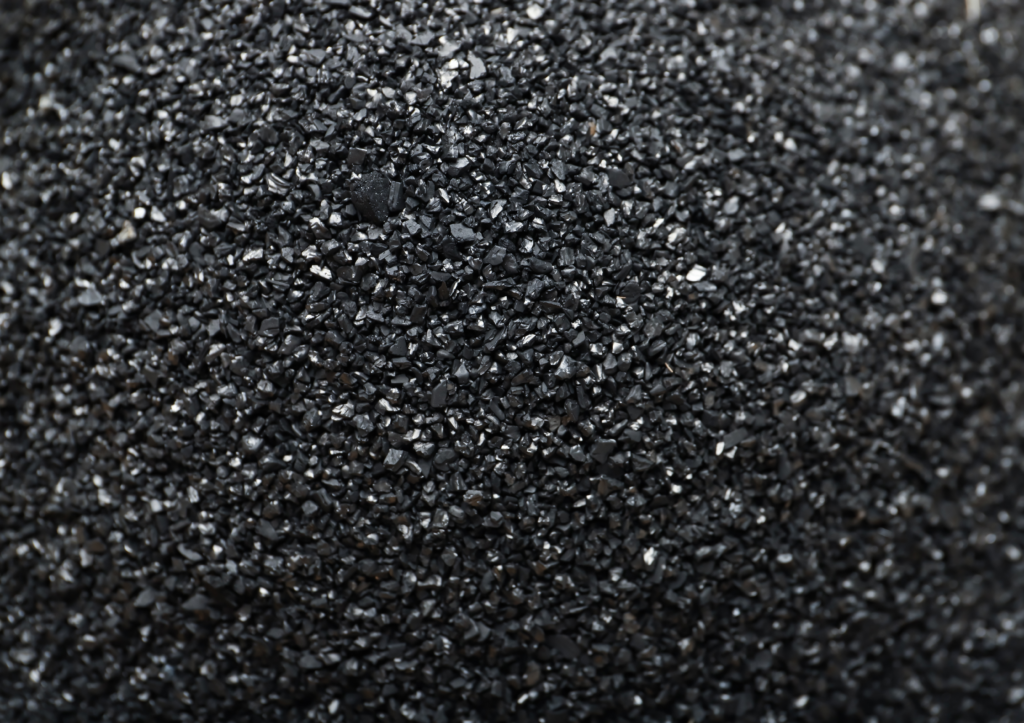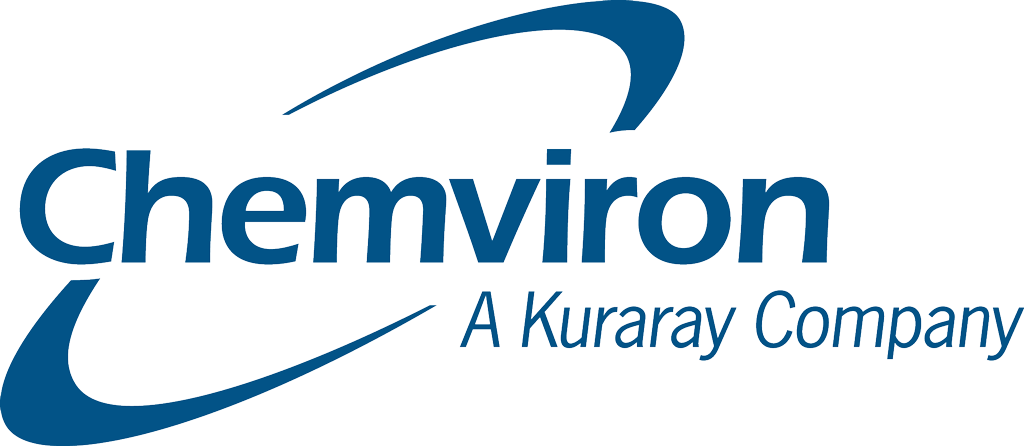The production of fruit juices, beer and other beverages can often be associated with the occurrence of undesirable contaminants which may affect their purity, colour, and taste. Therefore, many beverage production processes incorporate a purification or decolourisation step typically involving the use of activated carbon.
These purification steps are designed to remove any unwanted byproducts, colour, sharpness, mouldy tastes and odour compounds, such as geosmin. These compounds may have been generated in the process or during the growth, harvest or storage of the plant or fruit.
Activated carbon has been used in these processes for many years because it is a highly effective decolourising and purifying media. Purification with powder-activated carbons is typically carried out in batch operations, where a defined quantity of the powder carbon is dosed into the purification vessel.
Purification with granular activated carbons is typically carried out by passing the solution through a carbon bed. For acidic or higher purity applications, specific grades of activated carbon with low acid-soluble ash would be generally used.
Chemviron produces and provides acid-washed coal, wood and coconut-based activated carbons specially designed for the purification and decolourisation of such solutions.



Fruit Juice Purification
Fruit juices contain a complex range of natural colour bodies, including polyphenols and melanoids, originating from fruits and berries.
Activated carbon is widely used for the removal of these compounds, as well as other impurities such as pesticide residues and toxins. In apple juice applications, selected activated carbon can remove dark brown colours and colour precursors created after juice heating, colour precursors and mycotoxins.
One toxin of particular concern is patulin, which arises from mycotoxin microbial contamination of damaged fruit and is especially prevalent in apples. Patulin – see picture – is believed to be genotoxic, and a number of countries have instituted patulin restrictions on apple products.

Concentrated and decolourised grape and apple juices are used as a neutral base in the production of frozen juices, canned juices, concentrates, fruit drinks, fruit preserves, and soft drinks. Activated carbons, such as the Chemviron Acticarbone® and ENO Anticromos®, enhance the juice base by reducing unwanted colour, odour or flavour.
Fruit juices, like any natural product, exhibit variable qualities throughout the growing season. Powder-activated carbon is then often added in varying quantities to maintain product quality and improve shelf-life. This is particularly the case when fruit quality deteriorates towards the end of the growing season or in years when fruit yields are poor.
Apart from colour bodies, most fruits contain colour precursors that will develop into colours during processing or storage. An important group of such precursors are cyclic aromatics like furfurals, and one common example is hydroxymethyl furfural (HMF). These compounds can efficiently be removed using activated carbon.
The removal of any pesticide residues is also another application where activated carbon can achieve excellent results.
Brewing and Soft Drinks
Brewing of malted beverages can be traced back to ancient Egypt and the pyramids and in this respect, brewing and activated carbon share a history of beneficial coexistence. Brewing has developed into as much a science as an art, and activated carbon continues to play a vital role in many aspects of the brewing process.
Activated carbon is also used to remove colour from malts for use in clear beers, alcopops, seltzers, carbonated drinks and other flavoured beverages. Both granular and powdered carbons are suitable for this application although granular carbon may then be recycled by reactivation for reuse.
Chill haze and excess foaming can also affect a wide range of drinks. Specialised activated carbons can provide the required stabilisation in the beverages to prevent chill haze effects.
The treatment of tannic acid for flavour and odour removal is a process application in brewing where carbon adsorption is used. Since the tannic acid is treated at a low pH, acid-washed carbon is normally recommended for this application.
In addition, the carbon dioxide used for carbonating drinks is also often purified using activated carbon.
Visit our gas processing application page for more information.


Treatment of Influent Water
The characteristics of brewing water have an important influence on the character of the beer or soft drinks. Therefore, the provision of pure and consistent incoming water is the basis of all beverages. Granular activated carbon is typically used after prefiltration and may be also used for the treatment of mash water, blending water and steam products.
The carbons are used to remove any trace contaminants, VOCs, (TOC & DOC), residual tastes, odours, disinfection by-products (DBPs), ozone, chlorine, and chloramine.
When drinking water is supplied to food or beverage producers, pH and alkalinity are
important as they can affect the character of the finished beer for example.
The mechanism responsible for the pH excursion is an interaction between the anions present in the water (SO42-, Cl–, NO3–, etc.), the hydroxide ion (OH–), the hydronium ion (H3O+), and the surface groups of the activated carbon. The magnitude and duration of this pH and alkalinity excursions depend upon the type of carbon and the characteristics of the water to be treated especially the water pH.
To improve the stability of the carbon-treated water, Chemviron provides pH-treated grades of activated carbon. These patented pH products overcome these effects whilst enabling the benefits of carbon adsorption to be realised.
Activated carbons which are EN compliant and meet the Food Chemicals Codex testing protocols, are an effective treatment to ensure water that is contaminant, taste and odour free.
Decaffeination & Caffeine
Caffeine is a natural substance that is present in the leaves, seeds, and fruits of more than sixty plant species worldwide. Many food and beverage products made with these ingredients inherently contain caffeine. Caffeine is sometimes added to foods and beverages during the manufacturing process to enhance flavour, or in the case of medications, to enhance efficacy.
Decaffeination involves the removal of caffeine from green beans or tea. There are three main methods for decaffeinating coffee or tea.
- Water Extraction Process Decaffeination – This is a hot water extraction where the activated carbon recovers the caffeine from the extract water. Typically, an acid-washed activated carbon would be used
- Carbon Dioxide Decaffeination – This involves a supercritical CO2 extraction and would normally involve the dry carbon handling of the activated carbon involved.
- Solvent Decaffeination – This involves steaming the coffee beans and rinsing with a chemical solvent – typically methylene chloride and activated carbon are used to recover the caffeine.
Specially designed activated carbons are used for the optimum removal of caffeine with minimal loss of flavour and product components for each indicated decaffeination method.
The Chemviron Acticarbone® premium range of wood-based activated carbons can also be used to refine raw caffeine to produce a purified product.
Contact us for more information.
So How Can Chemviron Help You?
If you have a juice or beverage that you would like to be purified or you just want to improve your process, please provide us with some basic process details. Our experienced technical team can then make an assessment and advise on the most appropriate carbon and way to proceed with your application.
The most effective carbon to be used may depend on a number of factors. These include the type, composition, and concentration of the impurities or colour to be removed, the finished product quality, and the overall purification operations involved.


Powder Activated Carbons
Chemviron produces a premium range of primarily powder-based activated carbons in Europe, from renewable marine pine wood feedstock, under the Acticarbone® and ENO Anticromos® trademarks. The highly controlled production process, using this unique raw material, ensures that these carbons have excellent physicochemical properties, generating high-performance carbons.
These high purity, low ash carbons are specially designed for colour removal and adsorption of unwanted taste and odour compounds for these beverage applications. The Acticarbone® powder carbons are designed with a controlled pH, compatible with the beverage application and high permeability, which improves productivity during filtration.
All the Acticarbone® range are vegetable carbon-based and comply with the Food Chemical Codex (FCC). They are a cost-efficient solution for removing unwanted contaminants from fruit juices, fruit concentrates and malt beverages.
As part of the Acticarbone® range, Chemviron produces specialised wood-based granular carbons that are used for purification in juices and carbonated drinks.
Granular Activated Carbons
CPG® LF acid-washed agglomerated coal-based granular activated carbon is produced with virtually no fines or dust and is therefore particularly suitable for several beverage applications.
If this is a new application and granular activated carbon is being considered, why not mobile carbon filters, available on a rental basis. These are activated carbon vessels that can be used on-site as a carbon adsorber and then transported to and from site, without the need for any on-site carbon exchange.
Chemviron’s range of units of different sizes and capabilities includes stainless steel vessels which can be operated at temperature, available for immediate use. The range includes small mobile carbon filters that can be easily operated inside production plants and may be transported in and out in the service lifts, if required.
Once the purification step is complete or the carbon is spent, the mobile carbon filter may be returned to Chemviron or exchanged for a new unit. In addition, the spent granular carbon may be recycled by reactivation for reuse and so avoid any disposal costs and drastically reduce CO2 emissions.
If you need help on the choice of activated carbon, the potential for reactivation, the help of our mobile carbon filter service or just some further advice, please contact us – contact our technical team.

